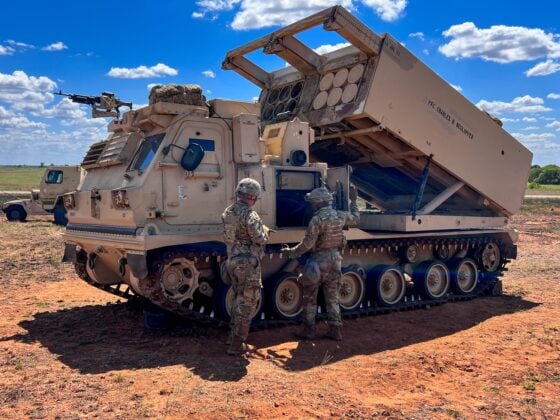
The United States Army has opened a market research process for the future modernization of its M270 Multiple Launch Rocket System fleet, outlining a six-year requirement for recapitalizing older launchers to the newer M270A2 configuration.
The announcement was published by Army Contracting Command – Redstone Arsenal as a sources sought notice and is intended to identify companies capable of supporting production, training, and sustainment from fiscal year 2027 through fiscal year 2032.
According to the notice, the scope of the planned contract would cover the production of M270A2 launchers through the recapitalization of existing U.S. Army M270A0 and M270A1 launchers. The work also includes delivery of spare kits and the instruction of new equipment training courses for both U.S. and international operators. The Strategic and Operational Rockets and Missiles Project Office would oversee the effort.
The notice states that the modernization focuses on enhancing the launcher by upgrading the M993A2 carrier vehicle and integrating the Improved Armored Cab as well as the Common Fire Control System. These upgrades are intended to bring the launchers to the M270A2 configuration. The Army described the effort as part of a broader modernization initiative, noting that foreign partners operating the M270 are also working to align their fleets with the same configuration “to achieve operational and production synergy alongside the U.S. Army.”
A key element of the upgrade is the integration of the Common Fire Control System (CFCS). The system is intended to unify the operation of the M270 launcher with the HIMARS platform and to enable the use of extended-range precision munitions. This includes the GMLRS-ER rocket, which extends effective range to roughly 150 kilometers compared with about 90 kilometers for standard GMLRS rounds, while each launch pod continues to carry six rockets.
The modernization also aligns the system with the Precision Strike Missile program. Precision Strike Missile was developed to replace the MGM-140 ATACMS and can reach targets at ranges up to 500 kilometers, compared with about 300 kilometers for ATACMS. The missile carries a smaller 91-kilogram warhead, with accuracy intended to compensate for the reduced payload weight.
The publication stresses that the document is not a request for proposal. “This sources sought notice is for informational purposes only,” the statement said. “This is not a ‘Request for Proposal (RFP)’ to be submitted. It does not constitute a solicitation and shall not be construed as a commitment by the government.” The Army added that responses are voluntary and that no funds are available to cover preparation costs. Companies that choose not to respond will still be eligible to participate in any future solicitation if one is issued.
The Army is seeking information on whether industry can meet several expectations. Respondents must show the capacity to perform work consistent with the requirement, outline the financial and technical resources needed to support the effort, and demonstrate an ability to manage schedules, performance tracking, personnel retention, and project risk. Companies will also be expected to meet security requirements, including secret facility clearances.
The notice emphasizes that the U.S. government “is not committed nor obligated to pay for the information provided” and will not accept phone inquiries. All questions must be directed to the points of contact listed.